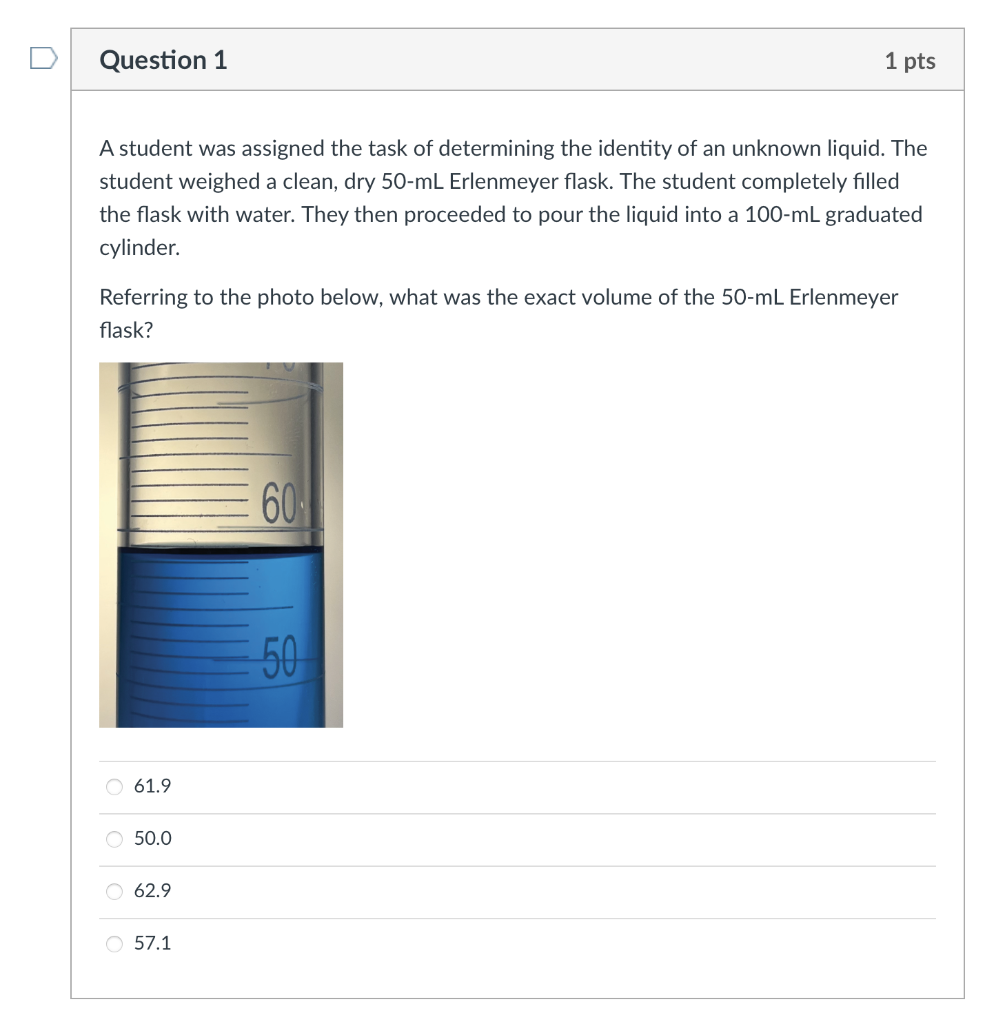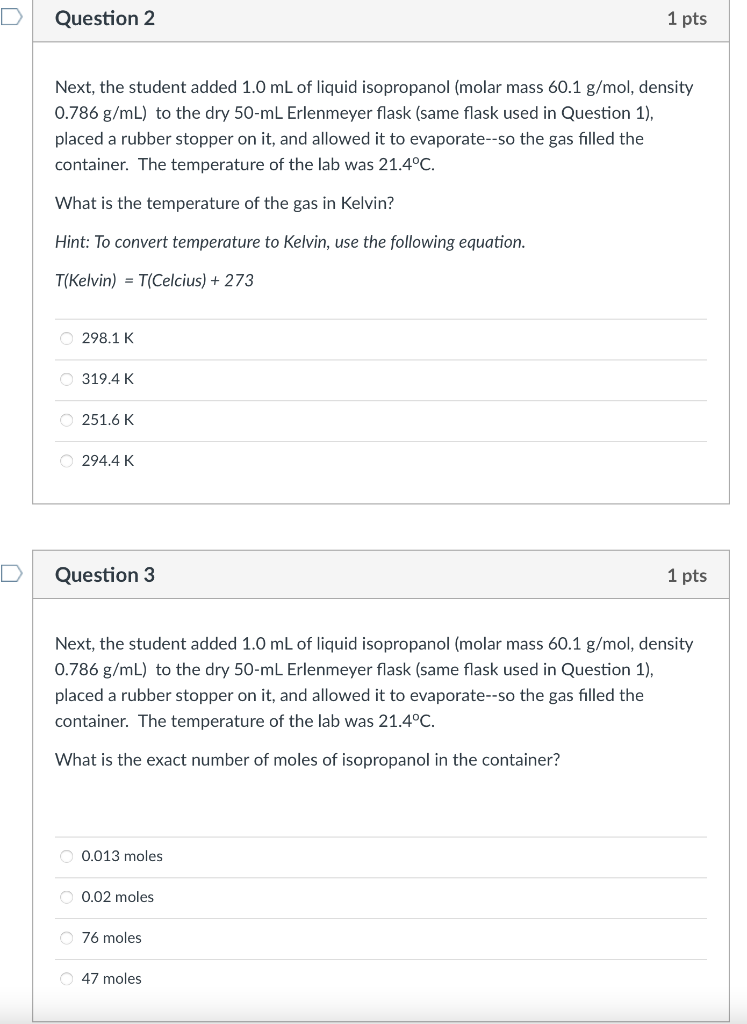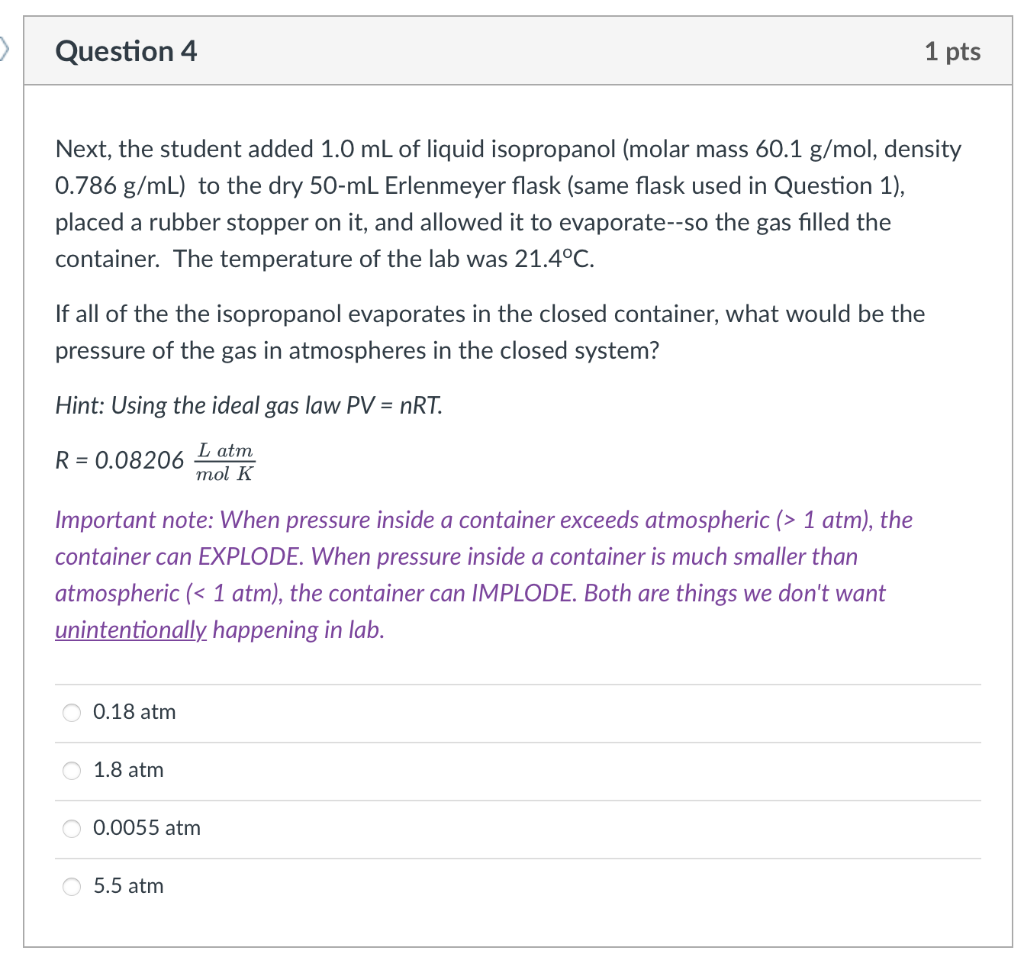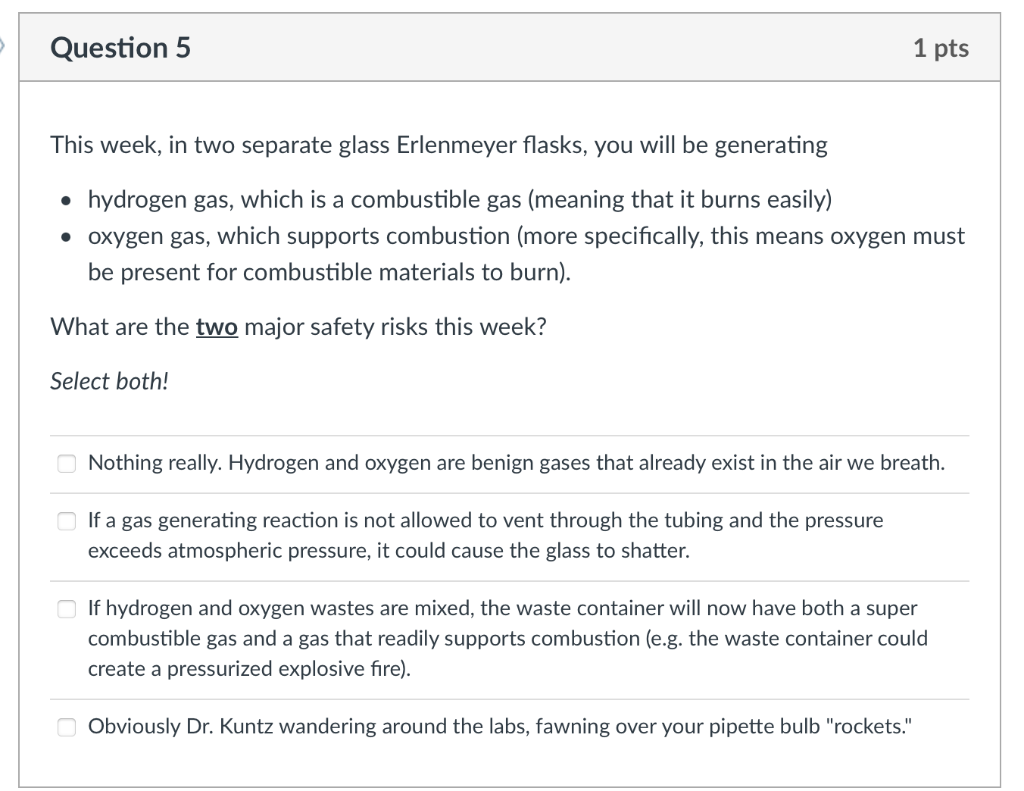Home /
Expert Answers /
Chemistry /
question-1-a-student-was-assigned-the-task-of-determining-the-identity-of-an-unknown-liquid-the-s-pa527
(Solved): Question 1 A student was assigned the task of determining the identity of an unknown liquid. The s ...
Question 1 A student was assigned the task of determining the identity of an unknown liquid. The student weighed a clean, dry 50-mL Erlenmeyer flask. The student completely filled the flask with water. They then proceeded to pour the liquid into a 100-ml graduated cylinder. Referring to the photo below, what was the exact volume of the 50-mL Erlenmeyer flask? 61.9 O 50.0 O 62.9 O 57.1 1 pts 60 50
Question 2 Next, the student added 1.0 mL of liquid isopropanol (molar mass 60.1 g/mol, density 0.786 g/mL) to the dry 50-mL Erlenmeyer flask (same flask used in Question 1), placed a rubber stopper on it, and allowed it to evaporate--so the gas filled the container. The temperature of the lab was 21.4°C. What is the temperature of the gas in Kelvin? Hint: To convert temperature to Kelvin, use the following equation. T(Kelvin) = T(Celcius) + 273 298.1 K 319.4 K O 251.6 K O294.4 K Question 3 O 0.013 moles Next, the student added 1.0 mL of liquid isopropanol (molar mass 60.1 g/mol, density 0.786 g/mL) to the dry 50-mL Erlenmeyer flask (same flask used in Question 1), placed a rubber stopper on it, and allowed it to evaporate--so the gas filled the container. The temperature of the lab was 21.4°C. What is the exact number of moles of isopropanol in the container? 0.02 moles 1 pts O 76 moles O 47 moles 1 pts
Question 4 Next, the student added 1.0 mL of liquid isopropanol (molar mass 60.1 g/mol, density 0.786 g/mL) to the dry 50-mL Erlenmeyer flask (same flask used in Question 1), placed a rubber stopper on it, and allowed it to evaporate--so the gas filled the container. The temperature of the lab was 21.4°C. If all of the the isopropanol evaporates in the closed container, what would be the pressure of the gas in atmospheres in the closed system? Hint: Using the ideal gas law PV = nRT. R = 0.08206 L atm mol K Important note: When pressure inside a container exceeds atmospheric (> 1 atm), the container can EXPLODE. When pressure inside a container is much smaller than atmospheric (< 1 atm), the container can IMPLODE. Both are things we don't want unintentionally happening in lab. 0.18 atm 1.8 atm 1 pts 0.0055 atm 5.5 atm
Question 5 1 pts This week, in two separate glass Erlenmeyer flasks, you will be generating • hydrogen gas, which is a combustible gas (meaning that it burns easily) • oxygen gas, which supports combustion (more specifically, this means oxygen must be present for combustible materials to burn). What are the two major safety risks this week? Select both! 00 Nothing really. Hydrogen and oxygen are benign gases that already exist in the air we breath. If a gas generating reaction is not allowed to vent through the tubing and the pressure exceeds atmospheric pressure, it could cause the glass to shatter. If hydrogen and oxygen wastes are mixed, the waste container will now have both a super combustible gas and a gas that readily supports combustion (e.g. the waste container could create a pressurized explosive fire). Obviously Dr. Kuntz wandering around the labs, fawning over your pipette bulb "rockets."
Expert Answer
Q.1. It must be around 58 but ur pic is showing bit different ....so correct option must be 57.1 Option d Q.2 Temperature in kelvin = 2



